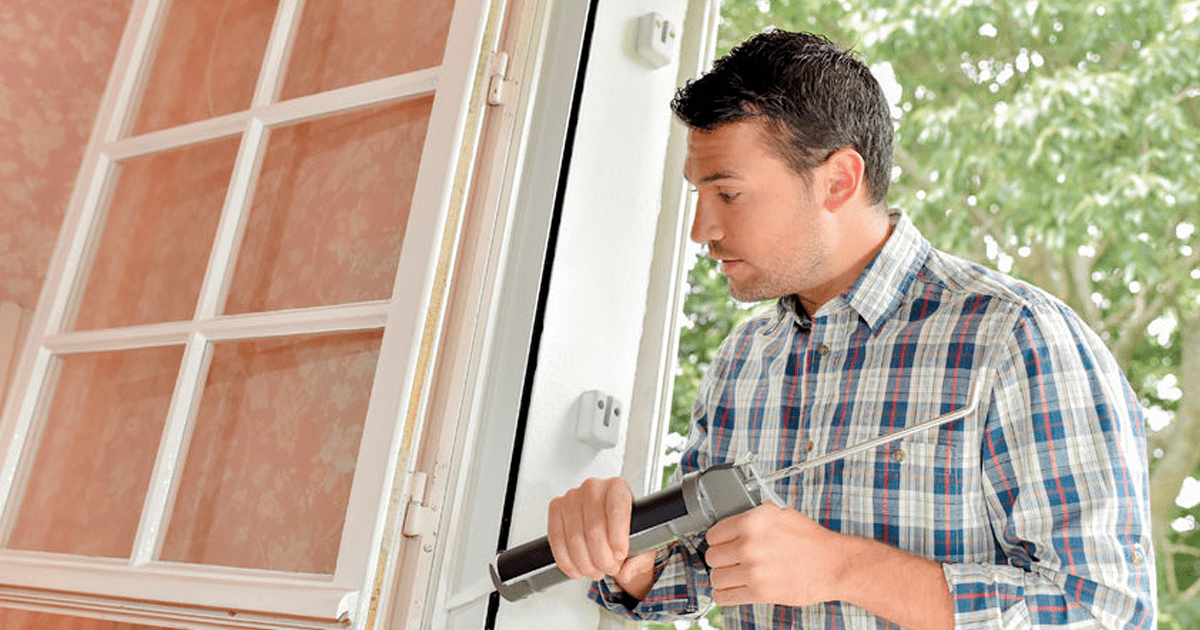Air Leaks in Your Home
If you are looking to increase your homes overall energy efficiency or trying to improve the comfort of your home, you may want to inspect your home for air leaks. Sealing air leaks is an affordable energy upgrade that pays for itself in less than a year.
As winter approaches we thought we should re-share this information while you still have plenty of time to get it done before it gets too cold.
What Exactly Are Air Leaks?
Air leaks allow hot or cool air to leak out from living spaces or from outside into living spaces interfering with desired room temperatures.
A Big impact from Small Gaps
In winter, cold air can enter your heated home through gaps and small cracks around doors and windows. To offset the intrusion, many homeowners run their heating system longer to maintain ideal room temperatures. In summer, hot air can infiltrate your home through the same air leaks extending the runtime of your cooling system. The added burden on your heating and cooling systems can shorten the lifespan of these systems.
Not only will these gaps lead to increased utility costs, moisture vapors from cooking, bathing, and cleaning can also flow through gaps and cracks especially in winter when windows and doors are kept closed for several months.
Moisture issues can lead to costly damage including ice dams, damaged insulation, and even mold. Click to learn more about ice dams, insulation, or attic mold.
Where to Look for Air Leaks
The Department of Energy recommends the following lists of common air leaks and gaps found in residential homes. Click here to read more from the DoE website.
On the outside of your house, inspect all areas where two different building materials meet, including:
- All exterior corners
- Outdoor water faucets
- Where siding and chimneys meet
- Areas where the foundation and the bottom of exterior brick or siding meet.
Inside your home, inspect the following areas for any cracks and gaps that could cause air leaks:
- Electrical outlets
- Switchplates
- Door and window frames
- Electrical and gas service entrances
- Baseboards
- Weather stripping around doors
- Fireplace dampers
- Attic hatches
- Wall- or window-mounted air conditioners.
- Cable TV and phone lines
- Where dryer vents pass through walls
- Vents and fans.
Also look for gaps around pipes and wires, foundation seals, and mail slots. Check to see if the caulking and weather stripping are applied properly, leaving no gaps or cracks, and are in good condition. Check the exterior caulking around doors and windows and see whether exterior storm doors and primary doors seal tightly.
Air Duct Leaks & Dust
Air ducts are the large metal ducts that deliver heated or cool air to rooms in your home. These ducts can be another source of leaked conditioned air. Ducts can run up from a basement or crawlspace or down from your attic. Inspect ducts for broken seals or gaps at the seams. Seal any suspected openings.
Air ducts can be the main source of dust in a home is caused by air duct leaks, poor fitting, old or low-quality air filters. Use the best quality air duct filter you can afford if dust is a problem in your home.
Testing for Air Leaks
Visually identifying all air leaks can be difficult. There are several tests that you can use to determine airflow is occurring. We like some of the ideas on this Wikihow page: https://www.wikihow.com/Find-Air-Leaks-in-Your-Home.
There are many leak testers on the market today to help identify air leaks. Or you can do it using an incense stick and pass it around the edges of common leak sites. Wherever the smoke wavers or is sucked out of or blown into the room, there’s a draft. You can also use a damp hand to locate leaks; any drafts will feel cool to your hand.
A candle can also be used to identify drafts and leaks but must be done with extreme caution. First, close all doors and windows in your home shut the fireplace flue and turn off any ceiling, bath, or cooking fans before testing. Steadily hold a candle, if the flame waves, you have a leak.
Please be extra careful not to get to close to drywall, drapes, furniture or anything flammable when conducting the candle test (including any loose-fitting clothing you may be wearing when conducting the test).
Fixing Air Leaks
For leaks around doors and windows, use caulk and weather stripping. There are various options for every budget at your local hardware store.
The time you invest in finding and sealing leaks will pay off for years in both comfort and dollars!
We are Attic Air – Home Insulation and Attic Ventilation Contractor
We serve Chicago and All Suburbs. Call us for a free assessment and recommendations for improving indoor air quality and ways to reduce your utility bills. You can reach us at 630.830.3870


